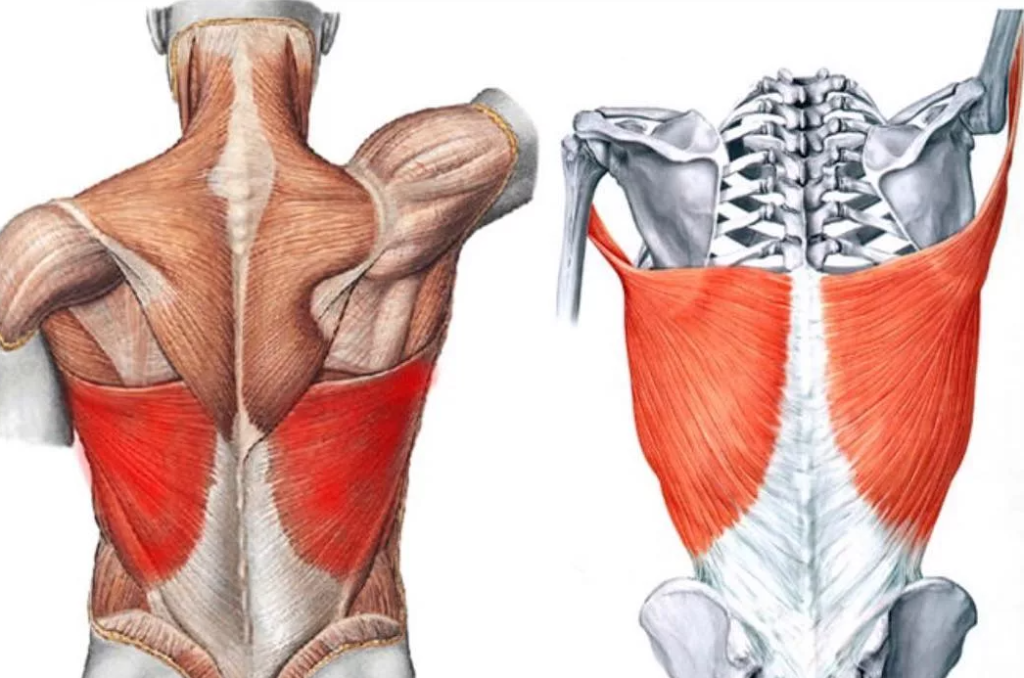Think it’s impossible to build muscle mass after the age of 50? Think again! We provide strategies to help maintain strength and muscle mass even in mature age.
Gaining Muscle Mass After 50
Strength training, bodybuilding, and powerlifting are often associated with individuals aged 20 to 30. However, let’s be honest: the size of biceps, the definition of abs, or one-repetition maximum records become less crucial as you age.
Individuals over 50 tend to prioritize health, weight management, blood pressure, cholesterol regulation, and reducing age-related pains. Nevertheless, strength training is not only crucial as you age but also contributes to a longer life.
Forget about exercises solely for appearance, although they are still beneficial after 50. Gaining muscle mass improves various aspects of health and body fitness, potentially extending your active life.
In this article, we’ll explore the key benefits of gaining muscle mass after 50, provide tips for achieving this goal, and present a workout program. We’ll also address frequently asked questions about strength training after the age of 50.

Benefits of Gaining Muscle Mass After 50
People are naturally inclined to laziness. This isn’t necessarily bad, as laziness and the desire to conserve energy have led to many technological advancements and conveniences that we take for granted.
Modern life has become more comfortable: mechanized transport replaced walking, piped water replaced well water, electric lighting replaced fire, and supermarkets replaced hunting and gathering. However, this convenience has led to a sedentary lifestyle, and many people seek motivation for physical exercise. Therefore, it’s essential to realize the benefits of workouts.
Understanding these benefits provides additional motivation to maintain a regular exercise program. Knowing WHY you are doing it can be a strong motivator. The next time you feel like skipping a workout, just remember all the benefits you’re missing out on:
1. Preserving Muscles and Strength
Normal muscle mass peaks around middle age and declines by 3-8% every decade. This process, known as sarcopenia, explains weakness in older individuals. Loss of muscle mass affects walking ability, balance, lifting, and longevity. It’s also associated with deterioration in physical and mental health.
The good news is that regular strength training can slow down the loss of muscle mass and restore it at any age. Gaining muscle after 50 requires more effort, but it’s possible.
2. Weight Management
As muscle mass decreases with age, fat mass tends to increase. This phenomenon, known as middle-aged spread, leads to a gradual increase in waist circumference. Loss of muscle mass reduces metabolism, and reduced activity means excess calories. These factors contribute to weight gain.
Gaining muscle mass helps maintain weight or lose fat. Muscles require more calories than fat, sustaining an active metabolism that helps prevent the age-related slowing of metabolism.
3. Increasing Bone Mass
Like muscles, bone mass decreases with age, a condition known as osteopenia, which, if left unaddressed, can lead to osteoporosis—a disease characterized by fragile bones prone to fractures.
Strength training stimulates bone growth as muscles pull on tendons, which in turn impact the periosteum. This activates osteoblast cells responsible for bone growth. Strong bones are less susceptible to fractures, especially crucial considering hip fractures are a major cause of disability in the elderly.
Gaining muscle mass after 50 requires extra effort, but it brings numerous health benefits. Maintain an active lifestyle and follow the workout program to enjoy all the advantages that come with building muscle mass in mature age.
4. Blood Glucose Stability
Despite natural fluctuations in blood glucose levels, persistently elevated levels can significantly impact your long-term health. Lack of control over glucose levels may be associated with:
- Development of diabetes
- Weight gain
- Kidney diseases
- Heart diseases
- Circulatory issues
- Immune system disorders
- Nerve damage
- Vision loss
Strength training contributes to effective glucose utilization in the body. After a workout, glucose is directed to muscles and the liver, where it is stored as glycogen [4]. Weightlifting also improves insulin sensitivity, regulating blood glucose levels, making sugar and carbohydrates easier to absorb.
When combined with a healthy, low-sugar diet, weightlifting can help control or prevent persistent elevation of blood glucose levels.

5. Stable and Mobile Joints
Joint pain often accompanies aging, and over the years, knees, hips, and shoulders may show signs of wear and tear. However, gaining muscle mass can reduce pain or prevent its exacerbation. Strong muscles stabilize joints, preventing excessive movements and reducing stress on bones.
Many strength exercises also promote joint mobility, alleviating pain [5]. Squats, lunges, pulls, and push-ups enhance mobility by strengthening muscles. Despite the need to adapt workouts to joint conditions, increased muscle mass positively influences joint comfort and functionality.
6. Improvement in Neurological Function
Your nervous system, serving as the software for organs and bones, also benefits from lifting weights. Strength training contributes to improved balance, coordination, and proprioception [7]. These neurological benefits help you move more easily, increasing overall activity and reducing the risk of falls, especially in old age.
7. Enhancement of Mental Health
In addition to physical benefits, gaining muscle mass has a positive impact on mental health. Regular workouts can improve various aspects of mental well-being, including memory, creative thinking, problem-solving abilities, and reduce the risk of depression and stress. Strengthening physical and mental health are closely linked, and weightlifting contributes to both aspects of your well-being.
8. Better Posture
Proper joint alignment determines posture. In good posture, the load on bones and muscles is minimal, while poor posture can create additional tension for muscles and joints, even affecting blood supply to the brain.
Regardless of age, weightlifting is one of the best ways to strengthen muscles that support proper posture. Exercises targeting the posterior chain (glutes, hamstrings, lower back), core, and upper back play a key role in correcting posture.
With age, posture may deteriorate, altering the center of gravity [6] and increasing the risk of falls. Good posture not only makes you look younger but also ensures freer movement.
Beyond Cardio: Strength Training for a Healthy Heart and Lungs.
If you aim for a strong heart and healthy lungs, is cardio the only solution? Despite the cardiovascular benefits of aerobic exercises, strength training also carries significant advantages. Lifting weights involves interval exercises, providing a unique form of cardio stress.
Compound exercises like squats, bench presses, and bent-over rows activate multiple muscles, demanding increased oxygen. This stimulates an elevated heart rate and breathing frequency, though not in the traditional sense of cardio workouts.
In addition to cardio, strength training also benefits the heart and lungs.
As you can see, building muscle mass remains an effective “medicine” even after the age of 50. Embrace these benefits to maintain a regular workout routine, and your efforts will pay off!
However, before starting a new exercise plan, older individuals should consult with a doctor. The provided information does not replace the advice of a medical professional.

Recommendations for Building Muscle Mass After 50
Now that you understand WHY it’s important to strengthen muscles after 50, let’s move on to HOW to do it. Follow these recommendations to get maximum results with minimal time and effort, making your workouts safe.
1. Base Your Workouts on Complex Compound Exercises
Exercises fall into two categories: compound and isolated. Compound exercises activate multiple muscles and joints, ensuring maximum efficiency. They are also more functional, aligning with everyday demands. Unlike that, isolated exercises are less functional and less effective. While isolated exercises have their place, focus primarily on compound exercises for optimal results.
2. Choose Exercises You Enjoy and Tolerate Well
Experts may debate which exercises are best for muscle growth, but enjoyment and comfort are real factors that make an exercise good, especially after 50. Pleasurable exercises maintain interest and motivation, ensuring regular workouts. However, these exercises should also be safe and not cause excessive discomfort.

3. Perform at Least 10 Sets for Each Muscle Group Each Week
While an excessive number of workouts is not required to increase muscle mass after 50, enough are necessary to achieve desired results. According to research, this usually means at least 10 sets per muscle group per week, but no more than 20. Sets can be distributed across multiple workouts or use full-body workouts for maximum efficiency. Performing at least 10 sets for each muscle group each week can achieve desired results. However, there is a point of diminishing returns, and additional efforts may reduce workout intensity and frequency.
These recommendations will help maximize results and make workouts more effective and safe, regardless of age.
Lift Weights 2-4 Times a Week
To build muscle mass after 50, there’s no need to hit the gym daily. In fact, for most people, 2-4 workouts per week strike a healthy balance between exertion and recovery time. As the body ages, it requires more time to recover after intense workouts, and pushing oneself before complete recovery may slow progress. In some cases, less frequent but more intensive training may be more effective. Therefore, becoming a frequent gym-goer is not necessary to achieve muscle-building goals. Ideally, aim for 2 to 4 workouts per week.
Train with Lighter Weights for More Repetitions
Traditional bodybuilding standards often advocate lifting weights within the range of 6-12 repetitions per set for muscle growth. However, this method, while effective, can be challenging for joints after the age of 50. Research indicates that using lighter weights with higher repetitions, approaching fatigue, can also stimulate muscle growth. So, instead of heavy dumbbells, opt for lighter ones, achieving similar results. This is particularly good news for those dealing with high blood pressure, osteoarthritis, or other conditions that might complicate weight lifting.
Warm Up Thoroughly
warming up is crucial to prevent injuries. You don’t need to spend the entire day on warm-up, but dedicating 10-20 minutes before a workout is vital for preparing your body. Warm-ups should include light cardio followed by dynamic exercises to improve the mobility and flexibility of muscles and joints involved in the workout. The time spent warming up is always justified.
Prioritize Mobility and Flexibility
In addition to the natural loss of strength with age, aging muscles and joints become less mobile. This can make some exercises difficult or even impossible and affect your overall mobility. A sedentary lifestyle also contributes to stiffness and immobility. However, lost flexibility and mobility can be restored at almost any age. Flexible and easily movable muscles will help you feel younger and move more freely. Stretching should not be limited to workout days; it’s better to do it daily to maintain flexibility.

Consistency Is Key
Unfortunately, breaks in workouts can set you back. A few missed workouts may still be justifiable, but a hiatus of more than two weeks can reduce your strength and muscle mass. Consistent gym attendance, taking health and injuries into account, ensures successful muscle building after the age of 50. The good news is that even a few short workouts per week can maintain your existing muscle mass. Doing something is better than nothing.
Respect Your Body's Need for Rest and Recovery
Remember the times when you could stay awake all night and work all day? Those days are gone! Now, as you age, your body requires more time for rest and recovery. Acknowledge that progress depends not only on workouts but also on ensuring you get sufficient sleep, ideally 7-9 hours per night.
Not Just Weights: Diversifying Your Approach to Fitness
The importance of strength training and muscle building is undeniable; however, they are just part of the overall care regimen for physical well-being and longevity. If your goal is a long, strong, and healthy life, it’s essential to balance strength training with cardio and activities that promote brain health. Passive time in front of the TV all night probably won’t contribute to extending your life
Additional types of activities include:
- Walking and hiking
- Swimming
- Biking
- Traveling
- Learning new skills, such as language or musical instruments
- Engaging in creative activities
- Reading
- Journaling
- Socializing
Most stimulating activities contribute to slowing down the aging process. It’s important that your activity doesn’t necessarily have to be strenuous; the key is to engage both your body and mind.
Acknowledge Your Limitations
Despite muscle building and strength training being a fountain of youth, they can’t indefinitely slow down the aging process, and some decline is quite inevitable. Your body changes with age, along with physical capabilities. Trying to exercise the same way as in your 20s or 30s can lead to injuries and disappointments. Change your perspective and accept the fact that you may not be able to do everything you did before. It might be challenging to accept, but there are still many things you can and want to do in the future.
Focus less on what was before and more on what you can and want to do ahead.

Start Slow, Gradually Increase Intensity
If you’re a beginner in workouts, the last thing you need is to dive into intensive training right away. Too much enthusiasm too early is an excellent way to get injuries, pain, and disappointment. Start with a program that you can easily handle, gradually increasing the intensity as your body adapts to regular workouts. Train for a few months to improve your physical fitness and strength. Getting in shape is a marathon, not a sprint.
Strive to make your workouts a part of your daily life, aligning with your lifestyle and minimizing the complexities of their execution. For instance, practice physical activity right after work on your way home to avoid leaving the house twice. Set up a home gym and train there. Consistency is key, and you’ll achieve the best results by sticking to a workout plan that you can sustain not just for weeks or months but for many years to come.
Workouts After 50
Now that you have all the necessary information to create your own muscle-building workout plan after the age of 50, we offer you a ready-made program to save your time and effort. This full-body program is designed to be performed 2-3 times a week on different days, for example, on Monday, Wednesday, and Friday. This approach allows you to complete the recommended ten or more sets for each muscle group per week.
The exercises in the program are adapted for individuals over 50, aiming for muscle building and improved functionality without negatively impacting the joints.
Perform this workout for the next 2–3 months, then transition to a more advanced program once you feel ready. It’s also important to precede workouts with a thorough warm-up.
- Reverse Lunges: 2-3 sets of 12-20 repetitions per leg, rest between sets 60-90 seconds.
- Dumbbell Bench Press on an Incline Bench: 3-4×12-20, 60-90 seconds.
- Seated Wide-Grip Lat Pulldown: 3-4×12-20, 60-90 seconds.
- Single-Leg Romanian Deadlift: 2-3×12-20 per leg, 60-90 seconds.
- Seated Dumbbell Shoulder Press: 3-4×12-20, 60-90 seconds.
- Seated Cable Row to Waist: 3-4×12-20, 60-90 seconds.
- Goblet Squats: 2-3×12-20, 60-90 seconds.
- Plank: 3-4×20-40 seconds, 60-90 seconds.
- Paloff Press: 3-4×12-20 per side, 60-90 seconds.
- 45-Degree Hyperextension: 3-4×12-20, 60-90 seconds.

Frequently Asked Questions:
- How much muscle can you build after the age of 50?
- The potential for muscle growth after 50 depends on various factors, including current muscle level, body type, workout history, and diet. Instead of predictions, focus on taking real actions to achieve results.
- What diet is best for people in their 50s?
- The best diet for muscle building and maintaining health at 50 is one that provides the body with essential nutrients and calories, based on natural foods, and is enjoyable. Dietary diversity allows for choosing suitable options.
- Can I modify exercises in the muscle-building program after 50?
- Yes, you can make changes to exercises while maintaining the program’s balance. For example, replace one-arm dumbbell rows with seated cable rows or push-ups instead of seated dumbbell presses.
- Can I train every day?
- It’s recommended to work out every other day to give muscles time for recovery. Full rest days can also be beneficial, especially for older individuals, considering a slower recovery process.
- What weights should I use in workouts after 50?
- Experiment to find a weight where performing 12-20 repetitions brings muscles to failure. Choose a weight that supports the range of 12 to 20 repetitions, but don’t hesitate to adjust the load as needed.
- Are there supplements that can help me build muscle at 50 and older?
- Despite claims from food companies, it’s possible to build muscle after 50 without using supplements. Regular workouts and a balanced diet can effectively stimulate muscle growth. However, certain substances can expedite the muscle-building process, providing the body with components for growth, increasing workout intensity and/or duration, and speeding up recovery. Useful supplements include:
- Protein: The primary building block for muscles.
- Creatine: Energy booster and muscle growth accelerator.
- Pre-workout complexes and caffeine: Increase energy and focus during workouts.
- ZMA: Combination of zinc, magnesium, and vitamin B6 for improved recovery.
- Melatonin: Natural aid for enhancing sleep quality.
- BCAA and EAA: Branched-chain and essential amino acids to support muscle growth.
- Despite claims from food companies, it’s possible to build muscle after 50 without using supplements. Regular workouts and a balanced diet can effectively stimulate muscle growth. However, certain substances can expedite the muscle-building process, providing the body with components for growth, increasing workout intensity and/or duration, and speeding up recovery. Useful supplements include:
- Can I continue lifting weights at the age of 60 and beyond?
- Yes, lifting weights should be continued at the age of 60 and beyond. The “use it or lose it” principle holds, and ceasing workouts will lead to muscle loss and strength decline. Returning to the previous level will take significant time, if achievable at all. Preserving existing muscle mass or slowing its loss is only possible with regular workouts, as they become the key to active and healthy aging.
Final Thoughts:
Gaining muscle mass at any age, even after 50, is possible with consistent effort and dedication. Despite the slowdown in bodily processes after 30, achieving strength and muscularity in later stages of life is attainable. Many athletes and bodybuilders confirm that impressive results can be achieved even in older age. Use the information in this article to continue making significant progress regardless of age.
Reference Source
- Chang SF, Lin PL. A systematic literature review and meta-analysis of the association of sarcopenia with mortality. Worldviews Evid Based Nurs. 2016 Apr;13(2):153-62. doi: 10.1111/wvn.12147. Epub 2016 Feb 4. PMID: 26844538.
- Hiol AN, von Hurst PR, Conlon CA, Mugridge O, Beck KL. Body composition and its association with muscle strength in older adults living in Auckland, New Zealand. PLoS One. 2021 May 28;16(5):e0250439. doi: 10.1371/journal.pone.0250439. PMID: 34048458; PMCID: PMC8162602.
- Massini DA, Nedog FH, de Oliveira TP, Almeida TAF, Santana CAA, Neiva CM, Macedo AG, Castro EA, Espada MC, Santos FJ, Pessôa Filho DM. Influence of strength training on bone mineral density in older adults: a systematic review and meta-analysis. Healthcare (Basel). 2022 Jun 17;10(6):1129. doi: 10.3390/healthcare10061129. PMID: 35742181; PMCID: PMC9222380.
- Jiahao L, Jiajin L, Yifan L. Effects of resistance training on insulin sensitivity in older individuals: A meta-analysis of randomized controlled trials. J Exerc Sci Fit. 2021 Oct;19(4):241-251. doi: 10.1016/j.jesf.2021.08.002. Epub 2021 Aug 19. PMID: 34552636; PMCID: PMC8429971.
- Latham N, Liu CJ. Strength training in older adults: the benefits of osteoarthritis. Clin Geriatr Med. 2010 Aug;26(3):445-59. doi: 10.1016/j.cger.2010.03.006. PMID: 20699165; PMCID: PMC3606891.
- Mayer F, Scharhag-Rosenberger F, Carlsohn A, Cassel M, Müller S, Scharhag J. Intensity and impact of strength training on older adults. Dtsch Arztebl Int. 2011 May;108(21):359-64. doi: 10.3238/arztebl.2011.0359. Epub 2011 May 27. PMID: 21691559; PMCID: PMC3117172.
- Lee IH, Park SY. Improvement of balance with strength training in older adults. J Phys Ther Sci. 2013 Dec;25(12):1591-3. doi: 10.1589/jpts.25.1591. Epub 2014 Jan 8. PMID: 24409027; PMCID: PMC3885846.
- Li Z, Peng X, Xiang W, Han J, Li K. Effects of strength training on cognitive function in older adults: A systematic review of randomized clinical trials. Aging Clin Exp Res. 2018 Nov;30(11):1259-1273. doi: 10.1007/s40520-018-0998-6. Epub 2018 Jul 13. PMID: 30006762.
- Baz-Valle E, Fontes-Villalba M, Santos-Concejero J. Total number of sets as a method for quantitative assessment of training volume for muscle hypertrophy: A systematic review. J Strength Cond Res. 2021 Mar 1;35(3):870-878. doi: 10.1519/JSC.0000000000002776. PMID: 30063555.
- Lasevicius T, Ugrinowitsch C, Schoenfeld BJ, Roschel H, Tavares LD, De Souza EO, Laurentino G, Tricoli V. Effects of resistance training with different intensity versus equal volume on muscle strength and hypertrophy. Eur J Sport Sci. 2018 Jul;18(6):772-780. doi: 10.1080/17461391.2018.1450898. Epub 2018 Mar 22. PMID: 29564973.


